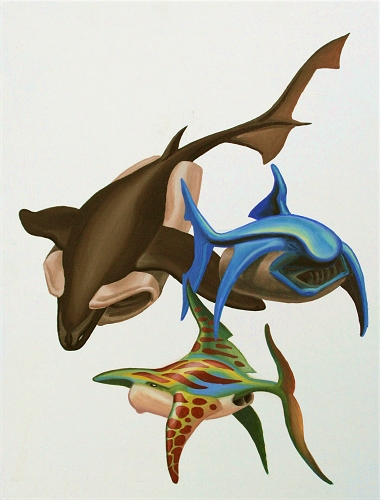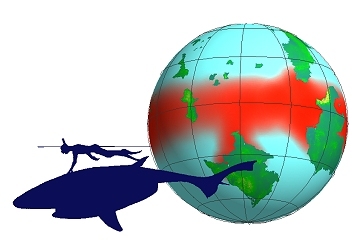


|
Tubesharks are filter feeders, swimming with their mouths wide open. There is a story behind the odd scientific name of the mottled tubeshark (the one at the bottom): Botanicus ignoramus. Tubesharks were christened 'sharks' by the first scientists to encounter them, who happened to be botanists. The zoological survey team of the area took a very long time to register the names they had chosen, and to their surprise the misnomer 'shark' in the tubeshark name had already become generally accepted. The zoologists' party then maliciously allocated the formal name Botanicus ignoramus to this species, 'because it was green'. This was obviously not well received by the botanical community. Excerpts from a discussion in the journal Folia Nomenclatura reveal the extent of the irritation. The foliatrist Lethbridge added fuel to the flames by writing: "Shame on the zoologists to have chosen such an insulting name. While the person responsible has not stepped forward, there were dignitaries from all branches of the Department of Fauna. Is it not true that the small parasitical Fish-III species Suctor Felsackeri received its formal name on the very same expedition? To this the carnivorist Felsacker replied immediately: "At the time of the Naming Incident I was in the field studying nocturnal hunts by Praying Parsons and was therefore not involved. But if I had I would have changed the name to Botanica ignorama as the chief botanist involved, Erica Calabrone-Gunnarsdottir, was a woman." The many replies yield insights into personalities, so to speak. Lethbridge attempted to stem the flood: "Let us end this altercation by quoting Nyoroge: Volodya, do not overestimate the importance of reason; people are driven not by their heads, but by what is beneath their diaphragm. (Kokkinopoulos' Life and Times of Nyoroge, p.1113)". |
|
The three species of tubeshark shown above inhabit various areas of the Southern Ocean, though not all are to be found everywhere. Some people have taken up swimming with tubesharks as an enlightening experience. As the tubesharks royally ignore the swimmers there appears little need for mysticism. Such swimmers should keep your distance to avoid getting sucked into the tubes. Tubesharks dislike clogging and will ectubate the swimmers forcefully, which is painful to both the tubeshark and the swimmer. Habitat: surface waters (temperature dependent) |

|